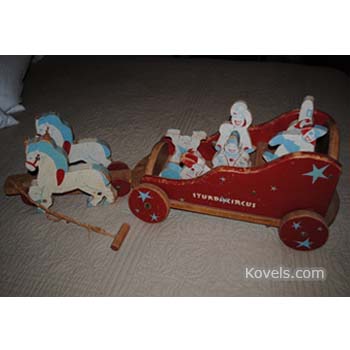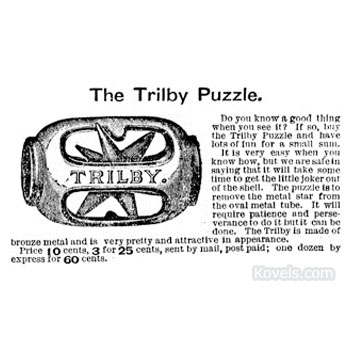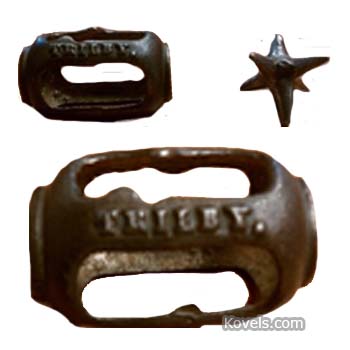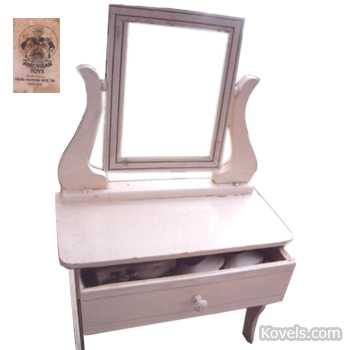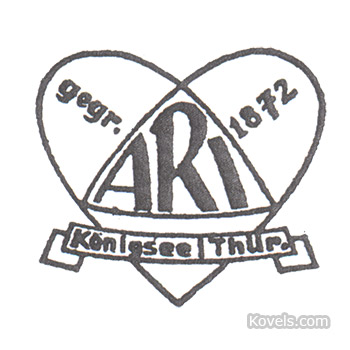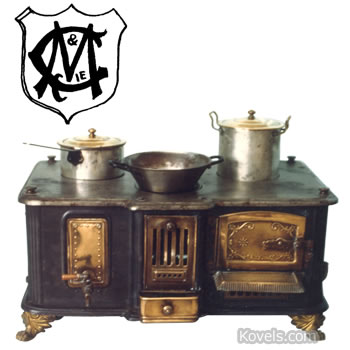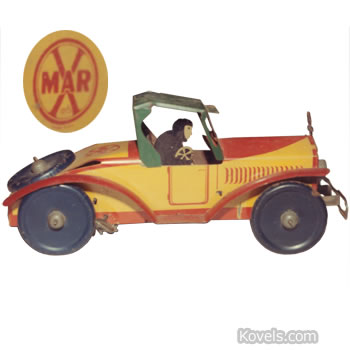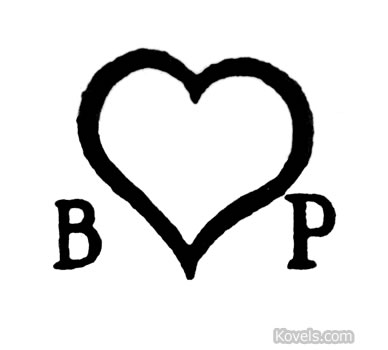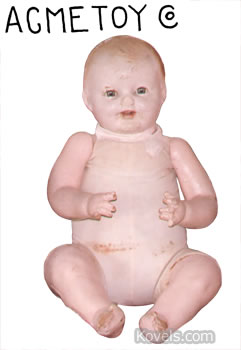Clyan Hall Sturdi-Circus
Q: I have a two-piece wooden pull toy but I can’t find any information about it. Two horses pull a wagon that says “Sturdi-Circus” on the side. There are six wooden clowns inside the wagon. It’s stamped “Clyan Hall” on the bottom. Can you give me any information about it?
A: Clyan Hall Sturditoys seems to have been in business for only a few years in the 1940s and not many items were made. Clyde H. Hall was born in Illinois in 1894 and moved to California about 1920. He was a high school manual arts teacher in Los Angeles and worked with copper as well as wood. Pieces marked “Clyan Hall Sturditoys” were made in Corona Del Mar, California, in the 1940s and included trays, lazy susans, album and scrapbook covers, children’s desks, chairs, and toys. Hall was mayor of Newport Beach from 1942 to 1946, at the same time he was making Sturditoys pieces. He and his wife moved to Hawaii in 1953 and opened a gift shop there. A Clyan Hall Sturditoys sand toy was offered for sale online for $100, but we haven’t been able to find the circus toy. Don’t confuse this company with Sturditoy, a Rhode Island company that made miniature pressed metal replicas of trucks, tractors and trailers from 1926 to 1933.
